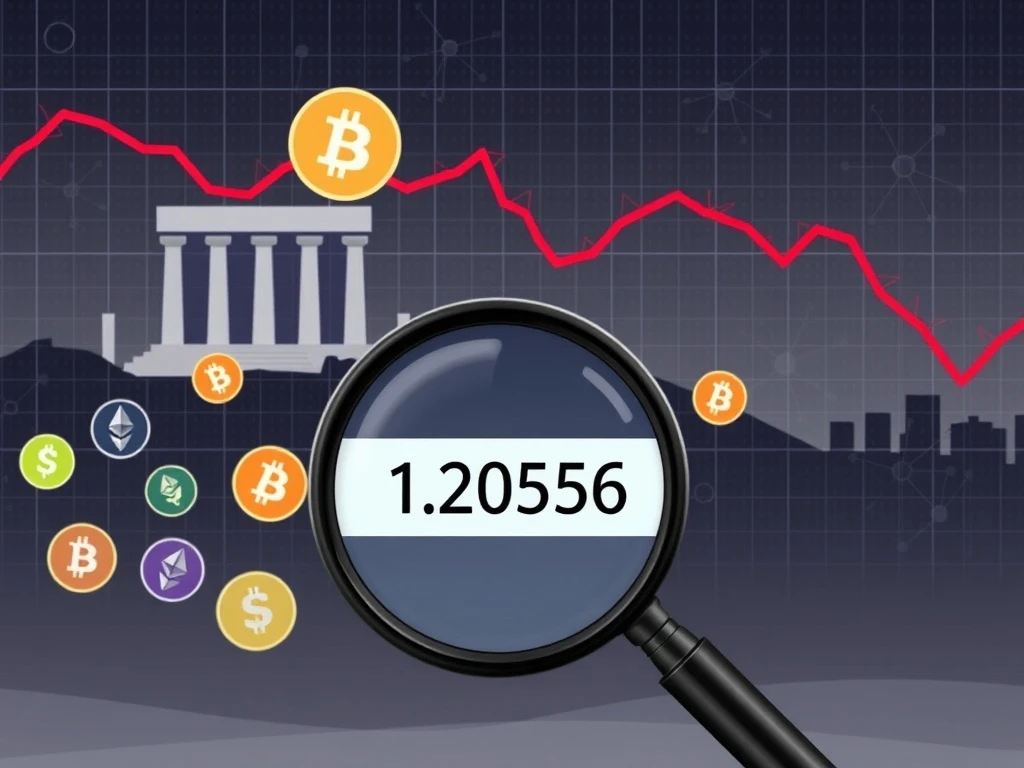Concerning Data: Centralized Exchanges Underreport Crypto Liquidations, Warns Hyperliquid CEO

The cryptocurrency market frequently experiences extreme volatility. This often leads to massive crypto liquidations. However, a recent alarming claim from Hyperliquid CEO Jeff Yan suggests that many centralized exchanges may significantly underreport these critical market events. This revelation sparks crucial questions about transparency and reliability within the digital asset ecosystem.
The Alarming Truth About Crypto Liquidations Reporting
Hyperliquid CEO Jeff Yan recently revealed concerning discrepancies. He highlighted how crypto liquidations are reported by major platforms. Yan, co-founder of the decentralized exchange Hyperliquid, specifically pointed to Binance. Binance is the world’s largest crypto exchange. He claimed their reporting method likely undercounts actual liquidations by a significant margin. On Monday, Yan shared his concerns on X. He highlighted a Binance documentation page. This page explains that the platform only includes the latest liquidation within each second interval in its order snapshot stream.
“Because liquidations happen in bursts, this could easily be 100x under-reporting under some conditions,” Yan wrote. This statement echoes a prior warning from crypto data platform CoinGlass. CoinGlass had stated on Saturday that “the actual [liquidated] amount is likely much higher” because “Binance only reports one liquidation order per second.” These observations raise serious questions about the true scale of market impact during volatile periods. Accurate data is essential for traders and analysts alike.
Centralized Exchanges Under Scrutiny During Market Turmoil
Recent market events have brought the reporting practices of centralized exchanges into sharp focus. A dramatic market sell-off on Friday saw Bitcoin (BTC) plummet to $102,000. This followed news of new tariffs. Similarly, Ether (ETH) dropped to $3,500. Solana (SOL) fell below $140. This widespread decline triggered a historic liquidation event. CoinGlass data indicates a staggering $16.7 billion in long liquidations. It also shows $2.456 billion in short liquidations that day. This total of over $19 billion represents the largest liquidation event in crypto history.
During this intense volatility, many centralized exchanges experienced significant operational issues. Binance, in particular, faced considerable criticism. Binance CEO Yi He acknowledged “brief lags” in some functional modules. She also noted “de-pegging” in certain wealth management products. However, she maintained that the core contract and spot matching engines remained stable. She also asserted that de-pegging events followed the market downturn, rather than causing it. Binance reportedly initiated over $280 million in compensation for affected users. Still, numerous reports indicated that prices for some altcoins briefly displayed as $0 on Binance during the mass liquidations. Pseudonymous crypto influencer Hanzo recounted his experience: “On Binance, buttons stopped working. Stop orders froze, limit orders hung, only liquidations were executed perfectly.” Binance later attributed this anomaly to a “display issue.” This was caused by changes to minimum price decimals for certain pairs like IOTX/USDT, not actual market data.
Binance Reporting Methods Questioned
The specific method employed by Binance for its Liquidation Order Snapshot Stream is at the heart of the debate regarding Binance reporting. This data stream provides real-time updates on force-liquidated positions. While batching outputs can improve performance, Yan explained that only reporting the last liquidation per second can severely underrepresent mass liquidation events. He noted that these events often process more than 100 liquidations per trading pair per second. Therefore, capturing only one instance drastically distorts the actual volume.
Yan’s claims followed a period where over 1,000 Hyperliquid (HYPE) wallets were completely wiped out during Friday’s market crash. Lookonchain data further showed over 6,300 wallets in the red. Combined losses exceeded $1.23 billion. This data underscores the massive impact of these events on individual traders. The transparency of Binance reporting directly affects how traders perceive risk and market health. Inaccurate reporting can create a false sense of security or misrepresent market stress.
DeFi Resilience Shines Amidst CEX Struggles
In stark contrast to the challenges faced by centralized exchanges, decentralized finance (DeFi) platforms demonstrated remarkable stability. For instance, the Ethena USD (USDE) stablecoin maintained its peg on the decentralized protocol Curve (CRV). Yet, it went severely off-peg on both Binance and Bybit. Haseeb Qureshi, a managing partner at crypto venture capital fund Dragonfly, highlighted this discrepancy on X. He observed that USDE hit $0.95 on Bybit and dropped well under $0.7 on Binance. However, it remained stable on Curve.
Guy Young, the founder of Ethena Labs, confirmed that USDe minting and redeeming functioned “perfectly” throughout Friday’s flash crash. His data revealed that users redeemed $2 billion in USDe within 24 hours across various crypto exchanges. These included Curve, Fluid, and Uniswap. Tom Cohen, head of investment and trading at Algoz, suggested that the market turmoil began with roughly $60–$90 billion of USDe simultaneously dumped onto Binance. This action likely exploited a mispricing. It then triggered a series of large sell-offs that quickly moved thinly traded markets. The robust performance of DeFi resilience during such extreme conditions offers a compelling argument for decentralized systems.
Hyperliquid CEO Highlights Decentralized Advantages
During the recent market volatility, Hyperliquid also highlighted its own performance. This further supports the claims of its Hyperliquid CEO. The platform reported zero downtime or latency issues. This occurred despite experiencing record traffic and volumes. Hyperliquid shared this achievement in a Saturday X post. “This was an important stress test proving that Hyperliquid’s decentralized and fully on-chain financial system can be robust and scalable,” the post stated. This successful navigation through extreme market conditions validates the architectural strength of decentralized exchanges.
The insights from the Hyperliquid CEO and the contrasting performances of CEXs and DeFi platforms underscore a critical ongoing debate. Transparency in liquidation reporting is paramount for market integrity. Furthermore, the ability of decentralized systems to maintain functionality during stress tests provides a compelling alternative. As the crypto market matures, the demand for accurate data and reliable infrastructure will only grow. This discussion will undoubtedly shape the future of digital asset trading.








